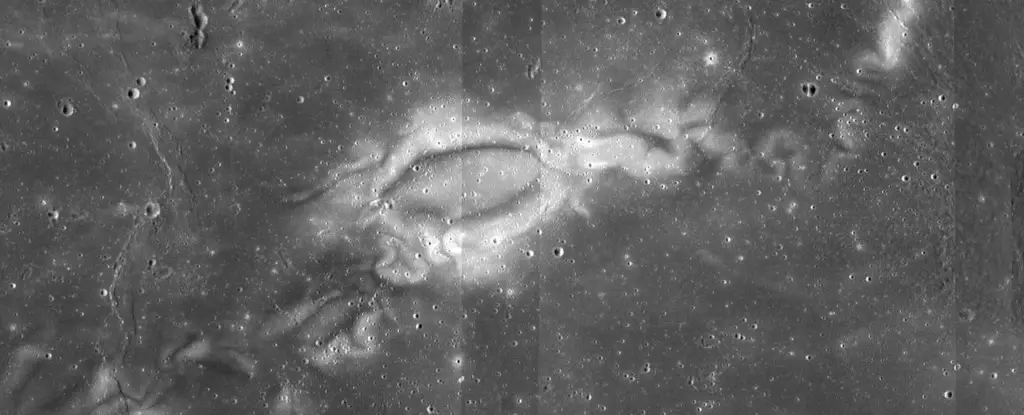The Moon, often known for its grey, rugged appearance, also has peculiar bright patches known as lunar swirls that have intrigued scientists for centuries. These light-colored regions, such as the well-known Reiner Gamma swirl, have remained shrouded in mystery since their discovery in the 1600s. However, a recent study from researchers at Stanford University and Washington University in St. Louis sheds new light on the origins of these enigmatic features.
Unlike Earth, the Moon lacks a global magnetic field to shield it from the Sun’s charged particles. When solar winds interact with the lunar surface, they darken the rock over time through chemical reactions. Despite this, certain areas on the Moon seem to be protected by miniature magnetic fields, with every light-shaded lunar swirl found to coincide with one of these local magnetic fields. However, the reasons behind this phenomenon remain unclear.
Debunking Previous Theories
Previous studies suggested that micrometeorite impacts on the Moon create local magnetic field barriers that reflect solar winds, causing the formation of lunar swirls. Nonetheless, researchers at Stanford and WUSL challenge this theory, proposing that an unknown force magnetizes the swirls and deflects solar wind particles. While impacts could potentially induce magnetic anomalies, the distinctive shapes and sizes of some swirls remain unexplained by this hypothesis.
Planetary scientist Michael Krawczynski at WUSL proposes that forces beneath the lunar crust could contribute to the formation of these peculiar features. One theory suggests that underground lavas cooling in a magnetic field create the magnetic anomalies observed in lunar swirls. Radar evidence of once-flowing molten rock beneath the Moon’s surface supports the notion of past volcanic activity, providing new insights into the potential mechanisms at play.
Ilmenite, a titanium-iron oxide mineral abundant on the Moon and commonly found in volcanic rock, may play a crucial role in producing a magnetizing effect within the lunar crust. Experiments conducted by Krawczynski and his team demonstrate that the slow cooling of ilmenite can stimulate metallic iron and iron-nickel grains within the Moon’s upper mantle, generating a powerful magnetic field. This discovery offers a plausible explanation for the strong magnetic regions associated with lunar swirls.
While much of our current knowledge about the Moon’s localized magnetic fields comes from orbiting spacecraft observations, further investigation is needed to unravel the mysteries surrounding lunar swirls. NASA’s upcoming Lunar Vertex mission, set to explore the Reiner Gamma swirl in 2025, aims to provide valuable insights by drilling directly into the lunar surface. As scientists continue to uncover the secrets of the Moon’s peculiar features, we are on the brink of solving the age-old puzzle of lunar swirls.



Leave a Reply